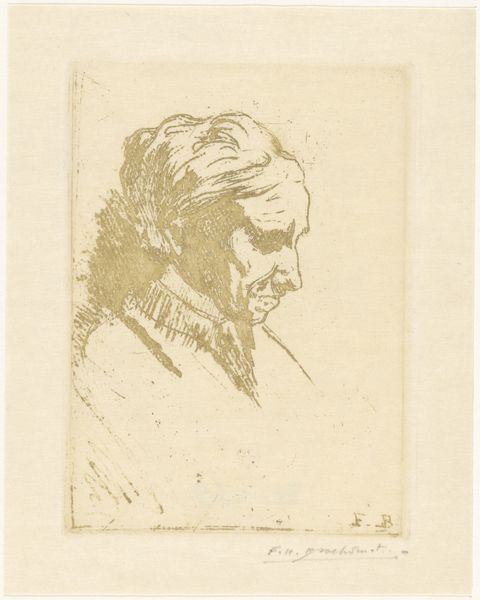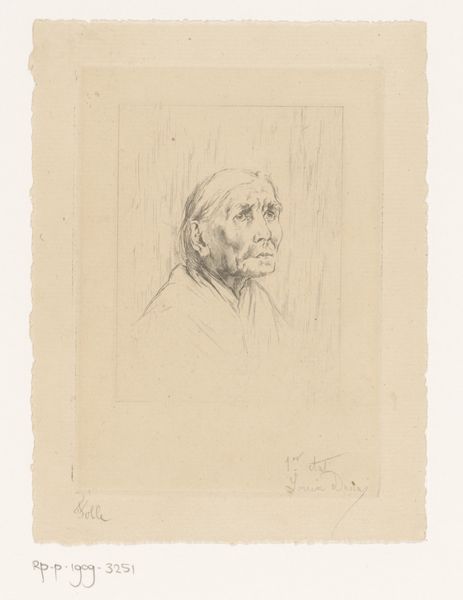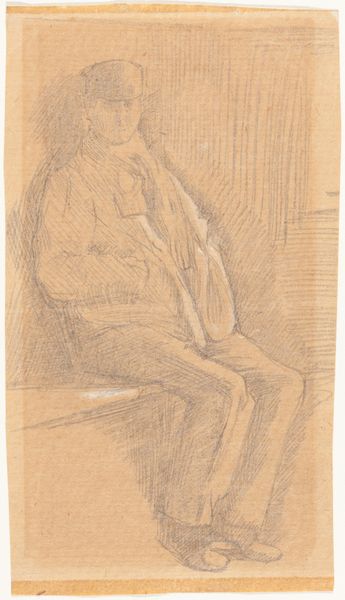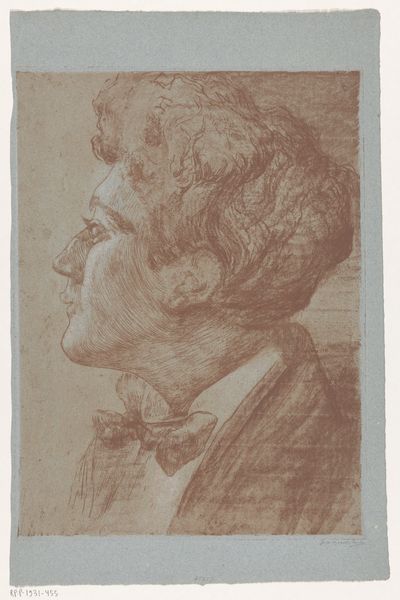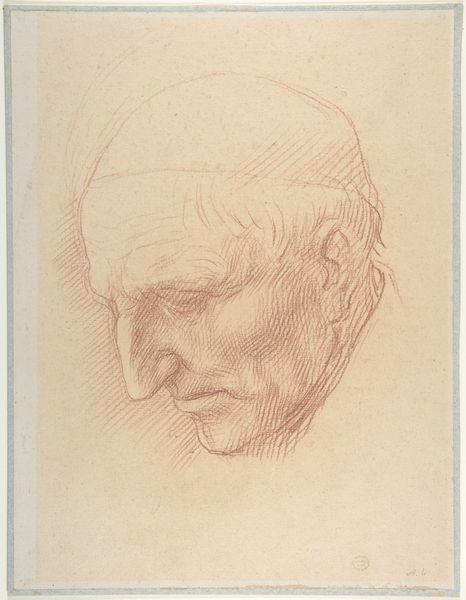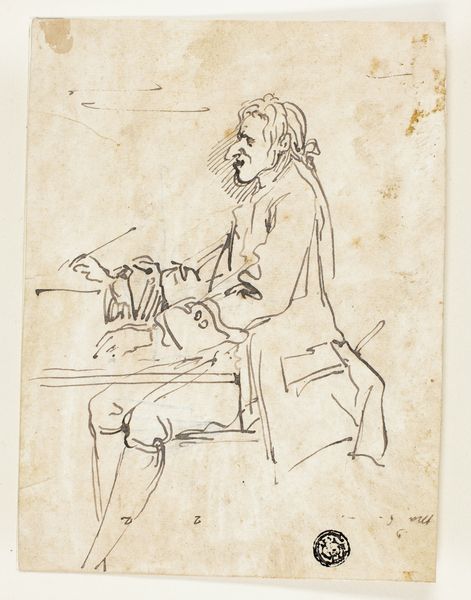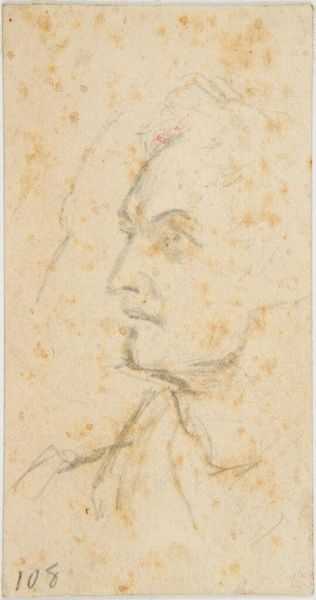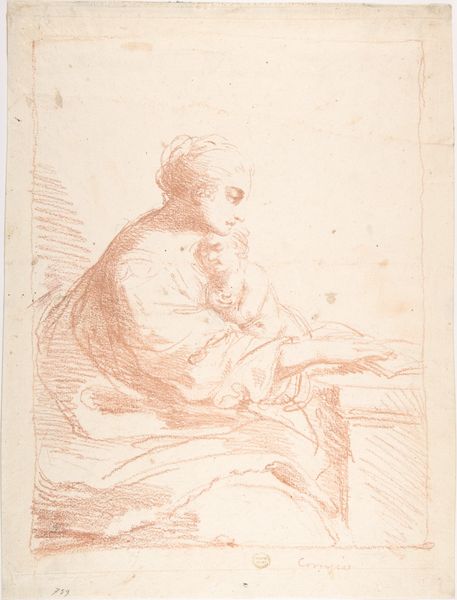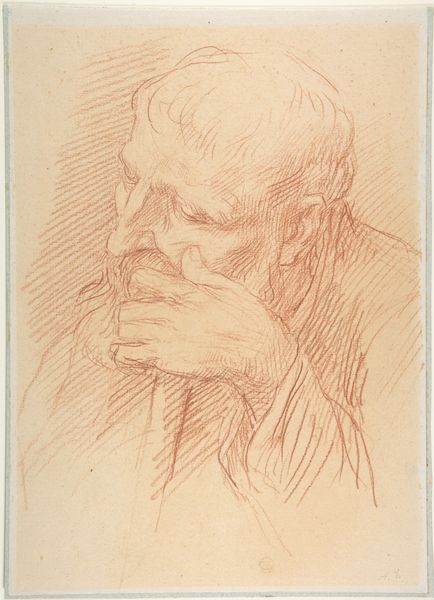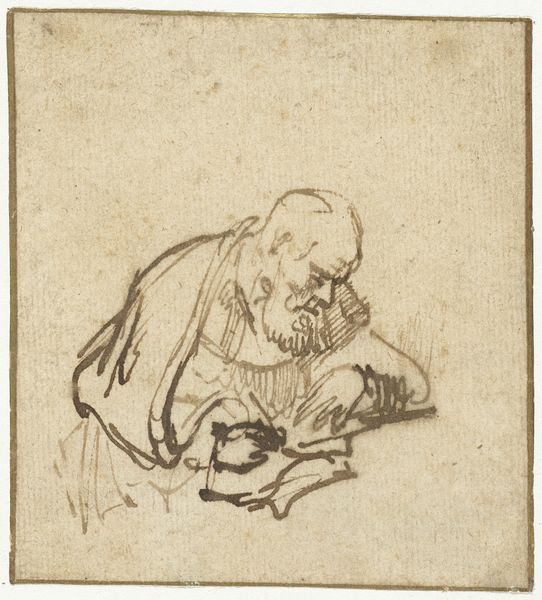
drawing, red-chalk, paper, dry-media, chalk
#
portrait
#
drawing
#
baroque
#
red-chalk
#
paper
#
dry-media
#
chalk
#
history-painting
Copyright: Public Domain
Curator: The commanding gaze of the figure in this red-chalk drawing by Charles Parrocel, aptly named "Head of a Greek," circa 1730, is immediately arresting. Editor: Yes, that intensity! The angle of the head, the furrowed brow—it all speaks to a potent psychological space. What stories does this face hold? Curator: It’s interesting to consider the materiality. Parrocel’s choice of red chalk on paper emphasizes the immediacy of the mark, creating a textured surface that invites the eye. It's very much about the hand and process. We should also reflect on where the paper comes from at the time it was drawn. Editor: I am curious about what "Greek" signifies here. The turban and strong features—could they be evoking a particular historical moment, or a symbolic representation of wisdom, perhaps drawn from classical antiquity? And note the dramatic pointing gesture – it calls attention! Curator: Possibly both, with history painting holding enormous power in those circles. What I notice is that dry media are not inherently valuable; chalk itself is mundane. The 'value' emerges through skilled labor—Parrocel’s capacity to portray a likeness that resonated then, and continues to resonate now. Editor: That hand is quite expressive. The pointing directs our attention beyond the frame, engaging the viewer directly in the drama implied by the portrait's severe gaze. Is he accusing, warning, or instructing? Curator: I find myself coming back to how this simple material allowed for the ready creation of so compelling an image that evokes the importance of Greece to the cultural production of the time. Editor: Ultimately, Parrocel gifts us an archetype ripe for our own projection. Thank you for clarifying some of these complexities.
Comments
No comments
Be the first to comment and join the conversation on the ultimate creative platform.

